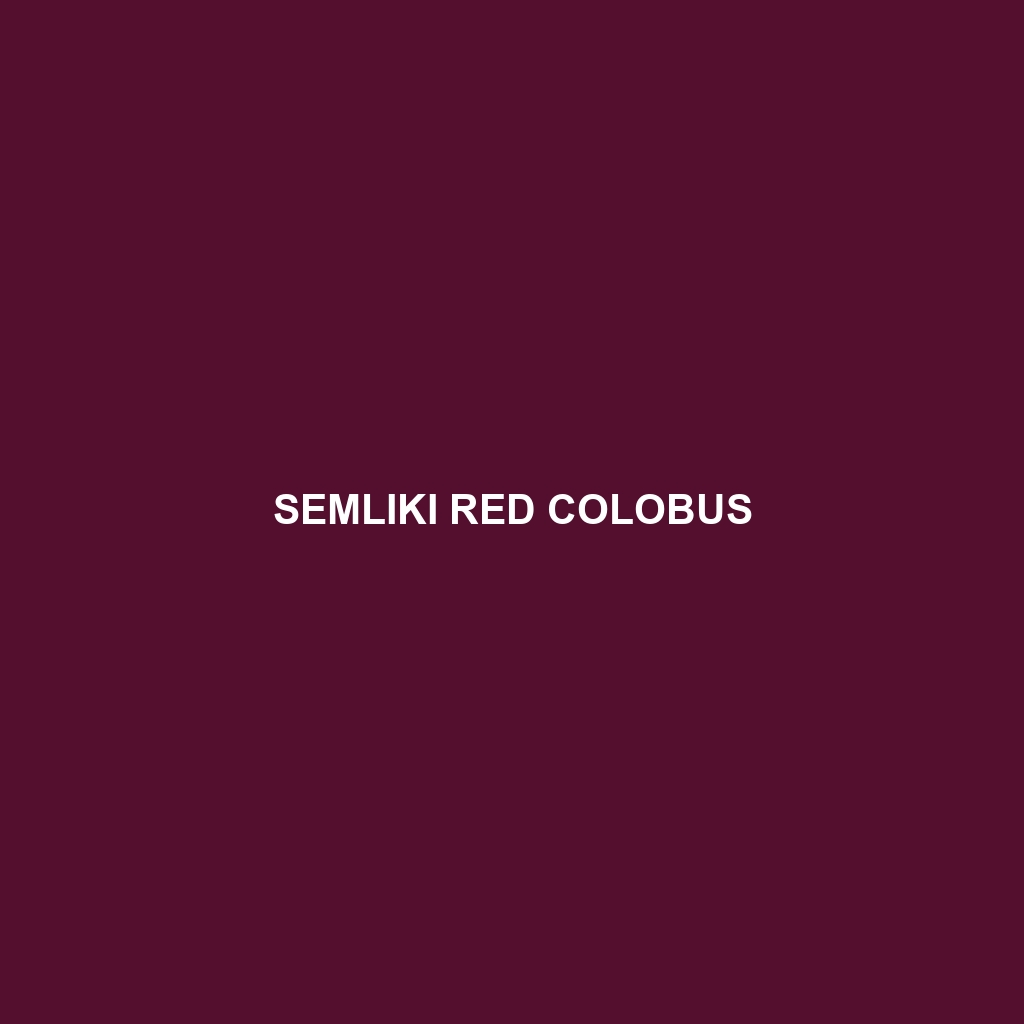Semliki Red Colobus: An In-Depth Look
The Semliki Red Colobus (Piliocolobus semlikiensis) is a fascinating primate species native to the Semliki Forest region in the Democratic Republic of the Congo. Known for its striking reddish fur and intricate social structures, the Semliki Red Colobus plays a significant role in its ecosystem. This page offers a comprehensive view of this unique primate, covering everything from physical attributes to behaviors, habitat, and conservation status.
Physical Characteristics
Size: Adult Semliki Red Colobus monkeys typically measure between 45 to 70 cm in body length, with a tail length that can reach up to 80 cm. Males are generally larger than females, with an average weight ranging from 7 to 11 kg, whereas females typically weigh between 6 to 9 kg.
Coloration: The Semliki Red Colobus is easily recognizable by its rich reddish-brown fur, which is often more vibrant on the head, back, and limbs. The underparts are usually lighter, with a mix of buff and grayish tones. Their faces are mostly hairless and feature a dark, almost black, skin tone, providing a stark contrast to their striking fur.
Special Features: One of the most notable features of the Semliki Red Colobus is its long, bushy tail, which it uses for balance when navigating through the forest canopy. Additionally, they possess a complex stomach structure with multiple chambers to help digest their fibrous diet.
Behaviors
Social Interactions: Semliki Red Colobus monkeys are highly social animals, living in groups that can range from 20 to over 100 individuals. These groups are matrilineal, meaning that females remain with their natal group while males typically transfer to new groups upon reaching maturity. Social grooming is a common behavior, strengthening bonds within the group.
Feeding Habits: These monkeys are primarily folivorous, feeding on a diet that consists mainly of young leaves, flowers, and fruits. They have a unique digestive system that allows them to break down the tough cellulose in leaves, aided by symbiotic bacteria in their stomachs.
Ecological Roles: As primary consumers in their ecosystem, Semliki Red Colobus monkeys play a crucial role in seed dispersal, aiding in the regeneration of their forest habitat. Their feeding habits also help to maintain the balance of the forest vegetation.
Habitats and Adaptations
Habitat: The Semliki Red Colobus is native to the lowland tropical rainforests of the Semliki Valley. These forests offer a dense canopy that provides both food and shelter. The monkeys are arboreal, spending most of their time in the trees to avoid ground predators.
Adaptations: Adapted to a life in the treetops, Semliki Red Colobus monkeys have strong, elongated limbs and prehensile tails that aid in climbing and balancing. Their sharp, curved claws and robust musculature enable them to move effortlessly through the forest canopy.
Conservation Status
Current Status: The Semliki Red Colobus is currently classified as Vulnerable on the IUCN Red List due to habitat loss, hunting, and human encroachment. Deforestation for agriculture and logging poses significant threats to their habitat, while hunting pressures stem from both local subsistence hunting and the bushmeat trade.
Conservation Efforts: Conservation initiatives for the Semliki Red Colobus include habitat protection through the establishment of protected areas, anti-poaching measures, and community education programs to raise awareness about the species and its ecological importance.
Fun Facts
Complex Vocalizations: Semliki Red Colobus monkeys have a rich repertoire of vocalizations used for communication, including alarm calls, mating calls, and various social interactions. Each call can convey different meanings and is crucial for maintaining group cohesion.
Symbiotic Relationships: These monkeys often form mixed-species groups with other primates like the Diana monkey (Cercopithecus diana). This mutualistic relationship helps in predator detection and enhances foraging efficiency.
Cultural Significance: In some local cultures, the Semliki Red Colobus is regarded with a sense of reverence and is often a subject of local folklore and traditional stories.
The Semliki Red Colobus is a remarkable example of nature’s complexity and beauty. Understanding and protecting this species is essential not only for its survival but also for the health of the entire ecosystem it inhabits.
